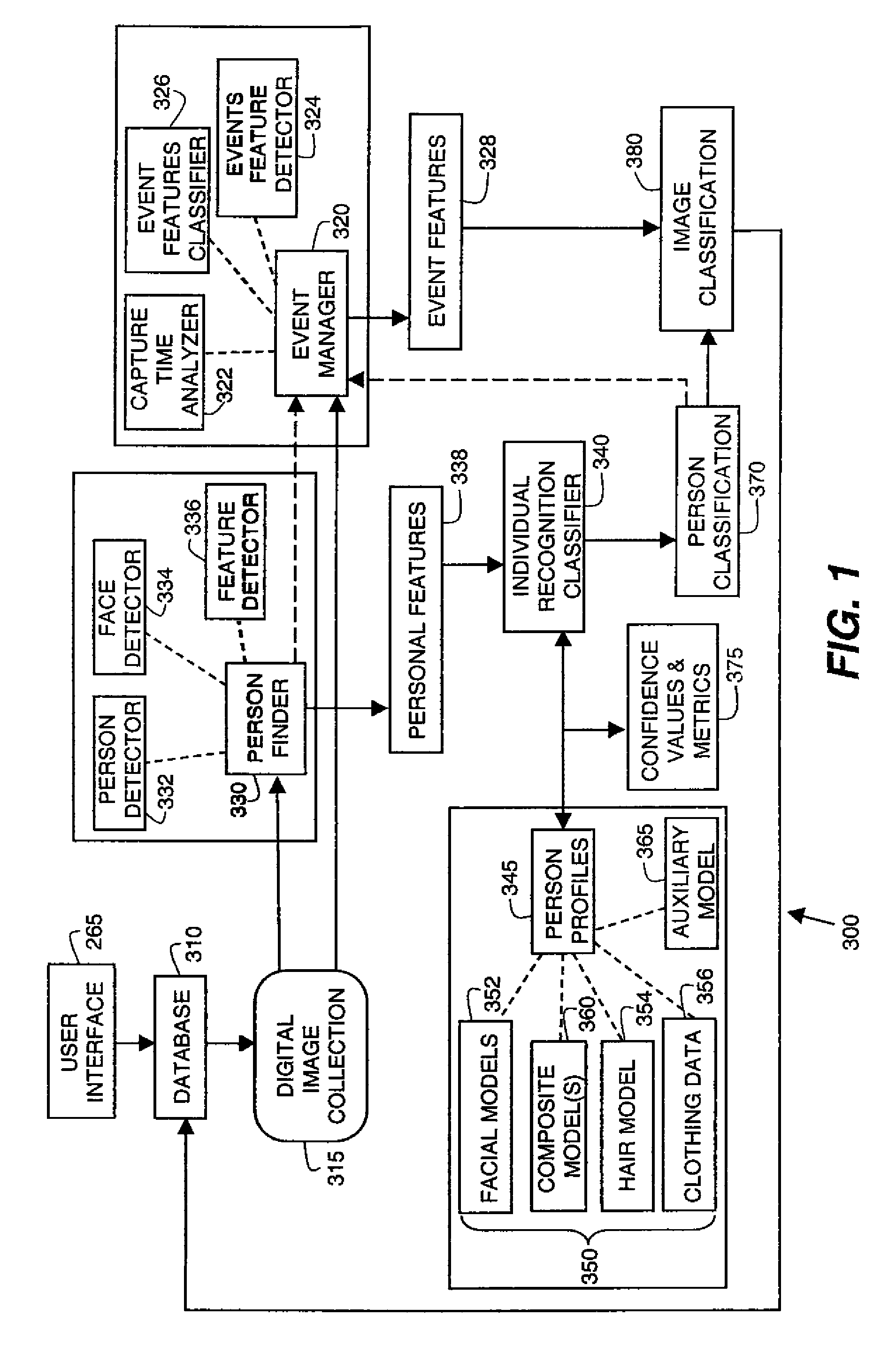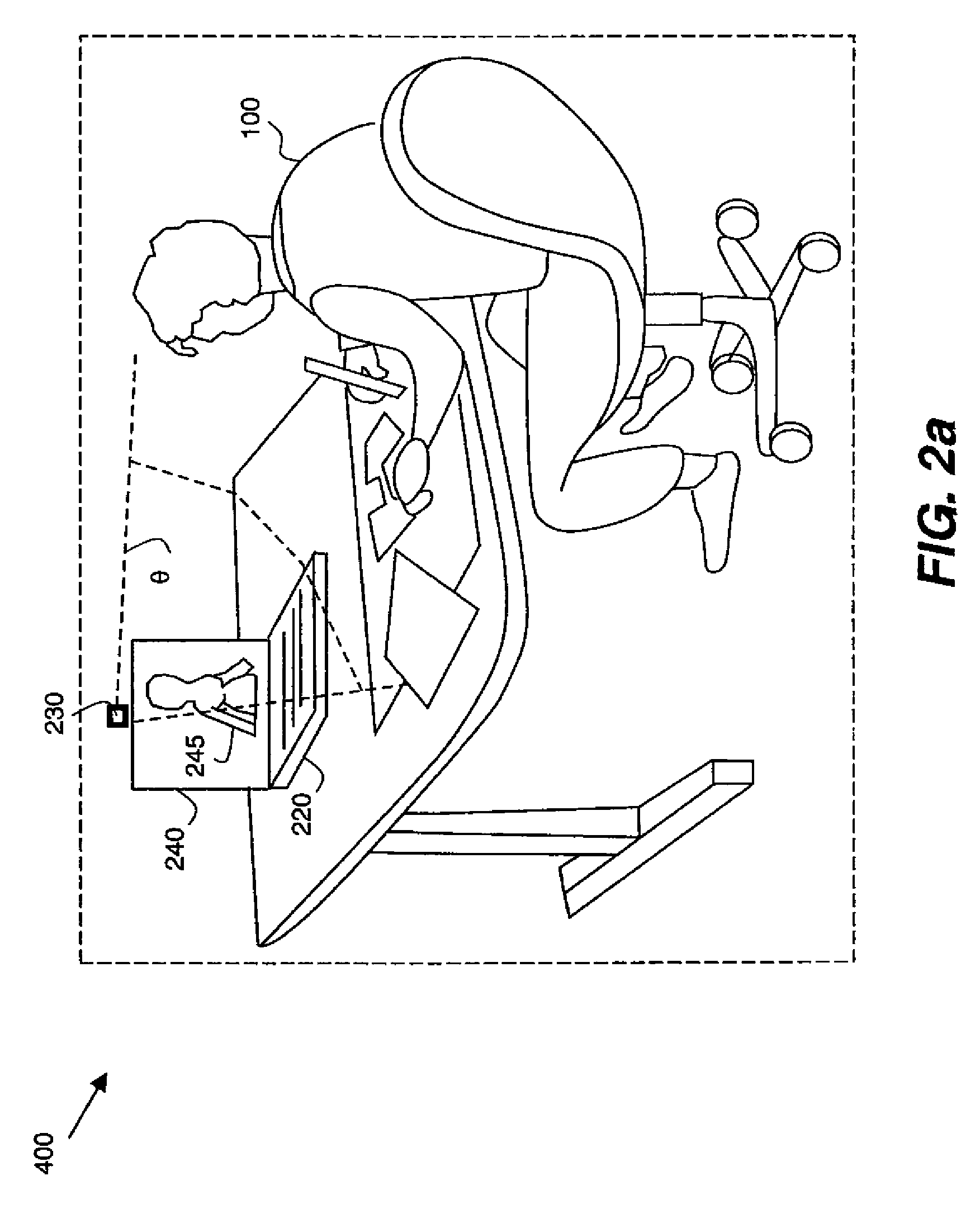Enabling persistent recognition of individuals in images
a technology of individual recognition and image, applied in the field of enabling persistent recognition of individuals in images, can solve the problems of increasing the problem of organization and retrieval of images and videos from electronic data file collections, the length of time spanned by a typical consumer's digital image collection is only a few years, and the problem of atypical consumers' organization and retrieval problem will continue to grow
- Summary
- Abstract
- Description
- Claims
- Application Information
AI Technical Summary
Benefits of technology
Problems solved by technology
Method used
Image
Examples
Embodiment Construction
[0040]While digital photography has revolutionized consumer behavior relative to image capture, use, and sharing, the association of semantic information with the images is impeded by the anonymous digital file structure. As image data files collect in electronic storage devices, the images can become less approachable than the stereotypical shoebox of 4″×6″ prints. Although file names can be changed, and metadata can be associated with images, enabled by various types of consumer input or software automation (relative to capture conditions, photo-analysis, etc.), it is difficult to make these associations robust.
[0041]In one aspect, evolving face recognition and identification algorithms are improving the ability of photo-software to associate people and their identities with electronic images, while reducing the need for human intervention. In particular, these methods rely on a ground truth initiation step, in which one or more reference or baseline images of an individual are as...
PUM
 Login to View More
Login to View More Abstract
Description
Claims
Application Information
 Login to View More
Login to View More - R&D
- Intellectual Property
- Life Sciences
- Materials
- Tech Scout
- Unparalleled Data Quality
- Higher Quality Content
- 60% Fewer Hallucinations
Browse by: Latest US Patents, China's latest patents, Technical Efficacy Thesaurus, Application Domain, Technology Topic, Popular Technical Reports.
© 2025 PatSnap. All rights reserved.Legal|Privacy policy|Modern Slavery Act Transparency Statement|Sitemap|About US| Contact US: help@patsnap.com



